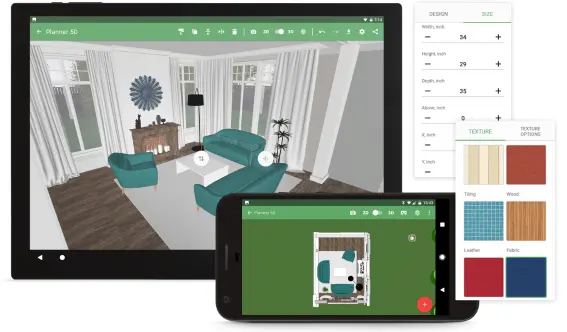
Welcome to the digital realm where creativity meets functionality! If you’re ready to take your online presence to new heights, you’ve landed in the right place. Whether you’re launching a personal blog, showcasing your portfolio, or setting up an e-commerce store, Squarespace is a powerhouse platform that can help you build a stunning website with ease. But let’s face it: navigating this versatile tool as a beginner can feel overwhelming at times. Fear not! In “The Ultimate Guide to Squarespace: Tips and Tricks for Beginners,” we’ll demystify all things Squarespace and equip you with insider knowledge that transforms your vision into reality. From essential design hacks to SEO secrets, get ready to unleash your creativity and watch your site flourish like never before! Let’s dive in and turn those clicks into connections!
Why Choose Squarespace?
Squarespace stands out as a favorite among creatives and small business owners. Its all-in-one platform simplifies web design without sacrificing quality. Users appreciate the visually appealing templates that are mobile-responsive right out of the box. This means your website will look stunning on any device, giving visitors a seamless experience. The drag-and-drop interface is user-friendly, making it accessible for those without coding skills. You can easily create beautiful pages with minimal effort. E-commerce features are robust, allowing you to set up an online store in minutes. From inventory management to payment processing, Squarespace covers everything you need. Additionally, the built-in SEO tools help improve your site’s visibility on search engines. You can optimize content effortlessly to attract more traffic. With 24/7 customer support and extensive resources available, assistance is just a click away if you encounter any hurdles during your journey.
Setting Up Your Squarespace Account
Getting started with Squarespace is a breeze. Head to their website and click on “Get Started.” You’ll be prompted to create an account. Just enter your email, set a password, and you’re off! Once you’re logged in, you’ll see options for different plans. Take a moment to explore them. Each plan offers various features tailored to specific needs. After selecting your plan, it’s time to choose a domain name if you don’t already have one. A catchy and relevant domain can enhance your brand’s online presence. Next comes the fun part: personalizing your site! Squarespace will guide you through initial setup steps like picking a template or importing content from another platform. Don’t worry about getting everything perfect right away; editing is easy as you go along. Embrace the learning curve—it’s all part of building something great!
Choosing a Template

Choosing the right template is crucial for your Squarespace website. With a variety of options available, it can be overwhelming at first. Start by considering your brand’s identity. Look for templates that align with your vision and values. A clean, modern design may work well for a tech blog, while a vibrant layout could suit an art portfolio better. Think about functionality too. Some templates are tailored for specific purposes like eCommerce or blogs. Ensure the one you select supports the features you need. Don’t shy away from customization options either. Many templates allow adjustments in colors, fonts, and layouts to create something uniquely yours. Lastly, preview different templates on multiple devices to see how they adapt to various screen sizes. This will give you insight into user experience before making a decision.
Customizing Your Website Design
Customizing your website design on Squarespace is where the magic happens. It’s your chance to create a unique online presence that reflects your brand. Start with the Style Editor, which allows you to tweak colors, fonts, and spacing easily. Experimenting with different combinations can yield stunning results without needing coding skills. Don’t forget about layout options. You can drag and drop elements around to find what works best for you. A clean layout enhances user experience and keeps visitors engaged longer. Adding personal touches like custom logos or images further establishes your identity. The more authentic it feels, the better connection you’ll forge with your audience. Responsive design is built into Squarespace templates, ensuring that customization looks great on all devices. Always preview changes across screens before finalizing them; this ensures consistency in user experience.
Adding Content: Pages, Blogs, and Galleries
Adding content to your Squarespace website is a seamless process. Start by navigating to the Pages section in your dashboard. Here, you can create standard pages like About, Services, or Contact. Blogs are an excellent way to engage visitors. Use the Blog Page feature to start sharing insights, stories, or updates related to your niche. Craft compelling titles and use tags for easy navigation. Galleries showcase visuals beautifully. You can add image galleries by selecting Gallery Page options. Choose from various layouts—grid, slideshow, or carousel—to highlight your work effectively. Remember that each content type allows customization options for SEO settings and social sharing features. This enhances visibility and boosts engagement on platforms like Facebook and Instagram. Use high-quality images and clear text throughout all sections for optimal user experience. Keep it fresh by regularly updating blogs and gallery items with new content that resonates with your audience’s interests.
Integrating Social Media and eCommerce on Squarespace
Integrating social media into your Squarespace site can elevate your brand presence. Start by linking your social accounts in the settings. This connection allows for easy sharing of content and engagement with followers. You can also embed social feeds directly onto your website. It’s a great way to display real-time updates and showcase user-generated content. Your visitors will appreciate seeing active interactions, making them more likely to engage. When it comes to eCommerce, Squarespace makes selling seamless. Set up an online store through their intuitive interface and customize product pages effortlessly. You can manage inventory, track orders, and even offer discounts right from the dashboard. Additionally, integrating payment options like PayPal or Stripe simplifies transactions for customers. A smooth checkout experience encourages repeat business and builds customer loyalty over time. Harnessing these features effectively enhances both visibility and sales potential for any budding entrepreneur on Squarespace.
Tips and Tricks for Beginners: SEO, Analytics, and Mobile Optimization

Getting started with SEO on Squarespace can seem daunting, but small steps make a big difference. Focus on keywords relevant to your content. Use them in titles, headings, and throughout your text naturally. Don’t overlook the importance of metadata. Fill in title tags and meta descriptions for each page; it helps search engines understand your site better. Analytics is another critical component you shouldn’t ignore. Connect Google Analytics to track visitor behavior and gather insights about what works well. Mobile optimization is essential too. With more users browsing on mobile devices, ensuring that your site looks great on smartphones and tablets is crucial. Squarespace templates are responsive by default, so check how everything appears across different screen sizes. Remember to test regularly—and update as needed—keeping user experience at the forefront of your design choices.
Troubleshooting Common Issues on Squarespace
Squarespace is user-friendly, but like any platform, issues can arise. One common problem is slow loading times. Check your image sizes; optimizing them can significantly enhance performance. If you notice that changes to your site aren’t saving, it might be a browser issue. Clear your cache or try using a different browser altogether. Sometimes the simplest solutions are the most effective. Integrating third-party apps can also lead to hiccups. Ensure all plugins are updated and compatible with your current version of Squarespace. For those encountering design glitches, double-check custom code snippets for errors or conflicts within templates. Lastly, if you’re struggling with SEO visibility, revisit your settings in the “SEO” panel and ensure everything’s correctly configured for optimal search engine performance.
Resources for Further Learning and Support
For those eager to dive deeper into Squarespace, a wealth of resources awaits. The official Squarespace Help Center is an invaluable starting point. It offers detailed guides, videos, and articles that cover nearly every aspect of the platform. YouTube is another treasure trove for visual learners. Many creators share tips and tutorials on everything from design tweaks to SEO strategies tailored specifically for Squarespace users. Online communities can also provide support and inspiration. Join forums or Facebook groups where users exchange ideas and troubleshoot issues together. Don’t forget about blogs dedicated to web design or business growth. Many industry experts regularly post insights related to using Squarespace effectively. Lastly, consider enrolling in online courses through platforms like Skillshare or Udemy. These structured lessons can help accelerate your learning curve while providing hands-on experience with real-life projects.











